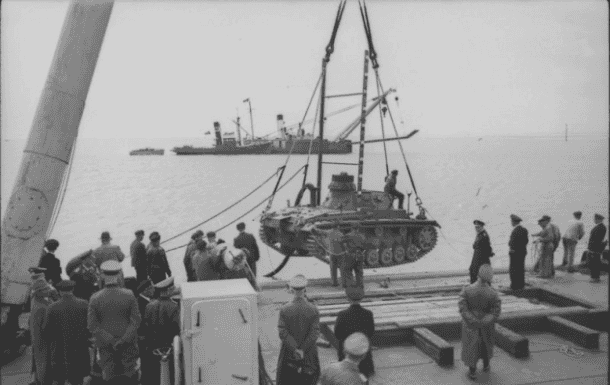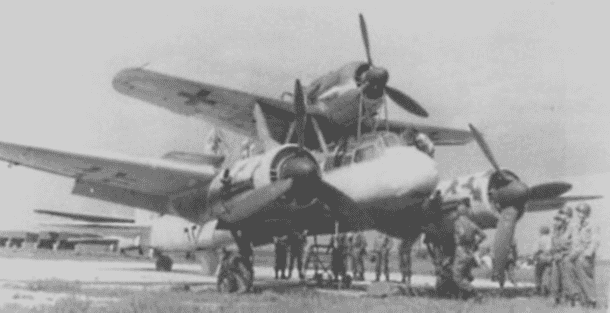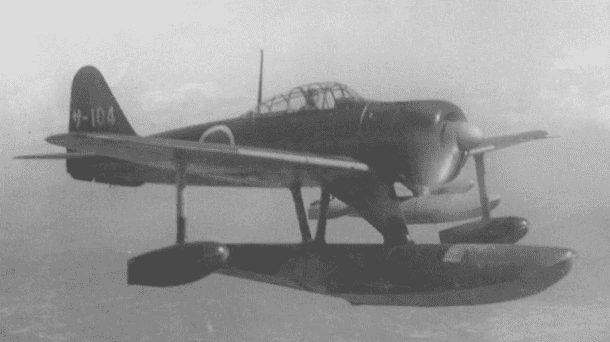Ah the era of World War 2! That smell of smoke, blood and rotting flesh in the air. The sirens of air strikes setting off everyday pleading us to hide for our lives! Young boys and men drafted off against their will to kill and get killed. Those were the days! Besides all the gore details, the war was not as simple as the phrase “kill or get killed” sounds. Sometimes the generals and the war strategists had to be more elaborate and cunning in order to kill as many people as possible using limited time and resources. So here is a list of some of the bizarre masterpieces that were created during the WW2 era in order to get an edge over the enemy.
1) Tauchpanzer
This kill machine was made by the Nazis for use in Operation Sea Lion, which was designed to invade the UK. The word Tauchpanzer literally means “diving tank”. It was designed to be dropped off the coast and travel underwater on the sea floor. It could also clank ashore and was ready to provide fire support for soldiers landing on the beaches of Britain. This Tauchpanzers was actually a modification of the Panzer III tanks and were made to be totally waterproof, with one-way exhaust valves and inflatable seals for the turret rings. They also had a hose attached in order to get air for the engine.
Even with all of those elaborate modifications and chages in the Panzer III design, this tank cum submarine could spend no more than 20 minutes under water, and was able to only travel at a depth of up to 15 meters (50 ft), being limited by the length of its air hose.

2) DD Tank
While the Nazis were building underwater tanks, the Allies engineered tanks that were able to float on sea. Specifically, a cloth screen was added which was to be raised around the tank when it was about to float. Addition of heavy propellers was done to move the tank forward. The concept was first explored in 1941 the Allies finally settled on the Sherman tank to be floated.
3) The Zveno Project
This was part of a Soviet program in the 1920s, in a bid to provide air support to ground troops. Its secondary objective was to protect their bombers from enemy fighter aircraft. The Zveno project was a flying aircraft carrier, which attached a giant Soviet TB-3 bomber with many smaller and shorter-ranged fighter aircraft or bombers. The TB-3 could carry as many as three aircraft at one time, two above the wings and one below the body.

4) Mistel Flying Bomb
Developed in 1942 by the German Sailplane Association, the Mistel was an unmanned aircraft which carried explosives. It was guided to the area of the bombing by a pilot in a fighter aircraft attached above it. Proposed in 1943, it was finally used in the battle in 1944 when the tide of war turned against the Nazi Germany. The Mistel failed because it was an extremely slow composite aircraft; and flew at just 240 kilometers per hour (150 mph). This made it literally a sitting duck for the Allied aircraft if it was ever spotted. It was also very inaccurate and mainly missed it’s targets by a long shot.

5) Nakajima A6M2-N ‘Rufe’
This was the only float-equipped fighter aircraft during World War II era. Nakajima A6M2-N “Rufe”, and it was a modification of Japan’s Zero fighter planes. They had seaplane floats along with two smaller floats on the side instead of conventional landing gear, meaning they could only land in the sea. It was designed to help the Japanese war machinery control from island bases and the far-flung islands of the Pacific. The first prototype fighter flew the same day that the Japanese bombed Pearl Harbor. The Rufe arrived just as the Pacific Theater of World War II kicked off.
Although its massive float and consequently its size and weight degraded performance significantly, it was still very useful in the combat for the Solomon Islands. Then these planes were eventually obsolete when the Americans bombed the base from which the seaplanes operated in 1942. However, Japan produced more Rufes; with the total ended up to several hundred seaplane fighters.

Have any more “cool” war technology to brag about? Comment below!


